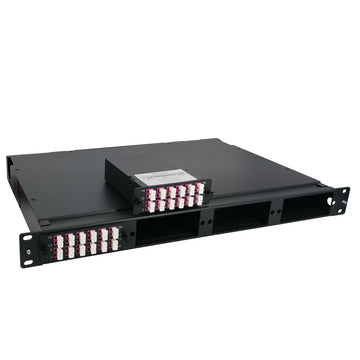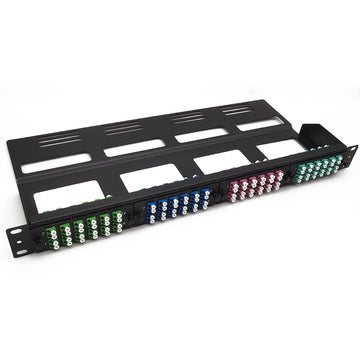How to Choose a Perfect OTDR?
How to Choose a Perfect OTDR?
The past few years have witnessed the boom in optical fiber being used in the network communication industry. In order to make sure that the fiber network is reliable and accessible, a more accurate and faster methodology for assessing the integrity of the infrastructure is indispensable. Therefore, it is essential to choose the right fiber optic testing tool/device: not only to meet the enhanced testing requirements but also help to increase the reliability and value of the whole network.
OTDR is one of the most powerful test instruments for fiber cable testing. The following passage contains clearer descriptions of OTDR to aid the users in understanding the basic principles of OTDR testing.
What is OTDR?
It is a fiber optic instrument used to characterize, troubleshoot and maintain optical telecommunication networks. OTDR testing is performed by transmitting and analyzing pulsed laser light traveling through an optical fiber. The measurement is said to be unidirectional as the light is inserted at the extremity of a fiber optic cable link.
An OTDR needs access to only one end of the link and acts like a one-dimensional radar system. By providing pictorial trace signatures of the fibers under test, it’s possible to get a graphical representation of the entire fiber optic link.
Just by injecting pulses of light into one end of a fiber and analyzing the backscattered and reflected signals, an OTDR can thus measure:
Optical Distance
- To elements: splices, connectors, splitters, multiplexers
- To faults
- To end of the fiber
Loss, Optical Return Loss (ORL)/Reflectance
- Loss of splices and connectors
- ORL of link or section
- Reflectance of connectors
- Total fiber attenuation
Why Need an OTDR?
Fiber testing plays a significant role in ensuring the network is optimized to deliver reliable and robust services without fault.
The Operation of the OTDR System
OTDR uses the effects of Rayleigh scattering and Frenel reflection to measure the characteristics of an optical fiber. An OTDR uses a light backscattering technique to analyze fibers. In essence, by sending a pulse of light into the fiber and measuring the travel time (“time domain”) and strength of its reflections (“reflectometer”) from a point inside the fiber, it produces a characteristic trace, or profile, of the length vs. returned signal level on a display screen.
Then the trace will be analyzed on the spot, point out immediately for documentation of the system, or saved for later analysis. OTDR provides for automatic analysis of the raw trace data, thereby eliminating the need for extensive operator training.
Factors to Consider When Choosing the OTDR
For different test and measurement needs, there exist a great number of OTDR models, then how do select the right one? A comprehensive understanding of OTDR specifications and the application will help make the choice. Moreover, based on your specific need, you should answer the following questions before looking for an OTDR:
- What kind of networks will you be testing?
- What fiber type will you be testing? Multimode or single-mode?
- What is the maximum distance you might have to test?
- What kind of measurements will you perform? Construction, troubleshooting, or in-service?
And when choosing an OTDR, you should take these factors into consideration:
- Size and Weight—important if you have to climb up a cell tower or work inside a building
- Display Size—5” should be the minimum requirement for a display size; OTDRs with smaller displays cost less but make OTDR trace analysis more difficult
- Battery Life—an OTDR should be usable for a day in the field; 8 hours should be the minimum
- Trace or Results Storage—128 MB should be the minimum internal memory with options for external storage such as external USB memory sticks
- Bluetooth and/or WiFi Wireless Technology—wireless connectivity enables easily exporting test results to PCs/laptops/tablets
- Modularity/Upgradability—a modular/upgradable platform will more easily match the evolution of your test needs; this may be costlier at the time of purchase but is less expensive in the long term
- Post-Processing Software Availability—although it is possible to edit and document your fibers from the test instrument, it is much easier and more convenient to analyze and document test results using post-processing software

Advantages of OTDR
People choose OTDR for its accuracy, measurement range and the ability to measure closely spaced events.
Accuracy
A figure of merit for the OTDR for a detector is accuracy. It means the correctness of the measurement, that is the difference between the measured value and the true value of the event being measured.
Measurement Range
Defined as the maximum attenuation that can be placed between the instrument and the event being measured, for which the instrument will still be able to measure the event within acceptable accuracy limits.
Instrument Resolution
Instrument resolution refers to a measure of how close two events can be spaced and still be recognized as two separate events. We all knew that the shorter the pulse duration and the shorter the data sampling interval, the better the instrument resolution, but the shorter the measurement range. In order to solve this situation, some OTDR manufacturers use a “masking” procedure to improve resolution.
Conclusion
An OTDR is a vital fiber optic tester for maintaining and troubleshooting optical infrastructures. While operating an OTDR is not particularly difficult, it requires familiarity with the models you use. OTDRs are available in a variety of fiber types and wavelengths, including single-mode fiber, multi-mode fiber, 1310nm, 1550nm, 1625nm, and more. When choosing your OTDR, first to figure out the applications that the OTDR will be used for, and then check the OTDR's specification to see if it is suited to your applications. And don't forget to consider those elements we stated in this article. Hope it would help when you hesitate to make your decision.












